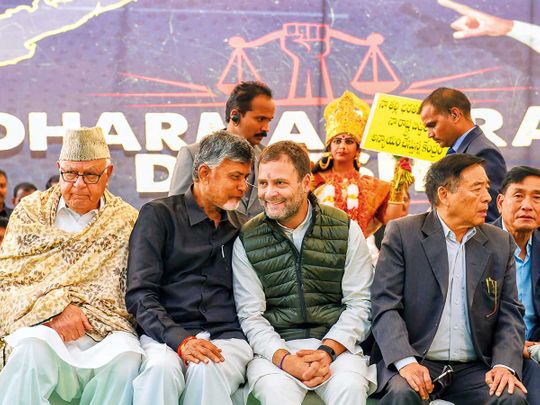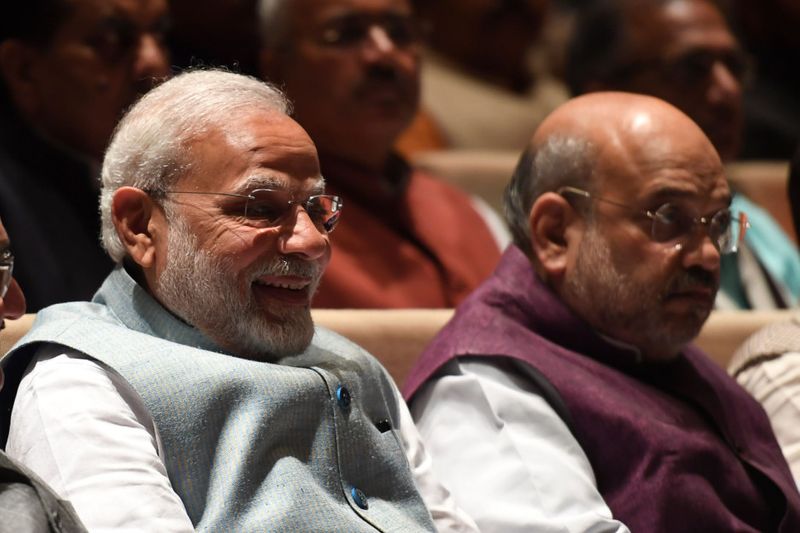
In India's hill state of Uttarakhand, the ruling Bharatiya Janata Party felt quite unpopular a few months ago. They changed two chief ministers in five years, going into the polls with a third one. There was considerable in-fighting within the state BJP, with one faction trying to defeat another.
Yet the BJP won the state handsomely.
In neighbouring Uttar Pradesh, the party was not facing as much “anti-incumbency” but most of its incumbent legislators were quite unpopular. The BJP cut the tickets of very few of them. This looked like a bad move. Wherever you went in UP, you heard people complain about their BJP MLA.
Yet the party won the state handsomely.
BJP is now bigger than RSS
In both cases, there are many obvious explanations, such as the popularity of Prime Minister Narendra Modi. But the factor that is acknowledged the least in the BJP’s success is the formidable party organisation the BJP built after Mr Modi became prime minister in 2014.
Many still think of the socio-political organisation, the Rashtriya Swayamsevak Sangh, as the backbone of the BJP. The old understanding of the RSS as a “parent” organisation needs a rethink in light of the BJP’s expansion as a party.
The BJP claims it is today the world’s largest political party, larger than the Chinese Communist Party. They claim they have 18 crore or 180 million members. Even if these numbers are exaggerated, you can just go to a village and ask to meet BJP members. You’ll be surprised to see how many turn up. The BJP’s aim is to have 21 members per polling booth, where one polling booth has around 1,000-1,400 voters or so.
These numbers mean the BJP is now a far bigger organisation than the RSS, as discussed in detail in a new book on the BJP by Nalin Mehta, aptly called “The New BJP”.
Centralised corporate efficiency
We already know the BJP is a massive party today. But Mehta’s detailed reporting of what this mammoth party organisation does, and how it is run, is breathtaking.
Workers of opposition parties such as the Congress, when I meet them in my election travels in various states, are often demoralised and directionless. They are often seen lazing around while the BJP worker is toiling hard, going door to door.
One reason for this is that the opposition parties still run on the old model of local leaders. The workers are allied to the party’s local leaders. Their dedication depends on whether they are happy with the district-level leadership, whether they are getting enough rewards and patronage.
In today’s BJP, the worker has become more important than the local leader, with some help from technology. The backbone of the new BJP is the call centre, which calls workers every now and then to give them tasks and then to follow up on them.
Mehta quotes a local BJP leader from UP who had a worker complain to this centralised call centre against him. The call centre called to ask the worker why he had not made a WhatsApp group in his booth yet, and the worker responded he was unhappy because the district-level leader had not been able to get a development work request in the village completed.
The call centre forwarded a recorded audio of this call with the worker to the leader against whom he was complaining. The leader was asked to resolve the issue.
This is a corporate-style efficiency in running a political party that I doubt any other party in India emulates.

Conversations must continue
Many have wondered why the BJP didn’t pay any political price for Covid-19. Again, the answer lies at least partially in the party organisation. When Covid resulted in a lockdown, the party took to Zoom in a big way.
What were they doing on these Zoom calls? The idea was to keep conversations within the party going. Senior leaders are mandated to be on these calls with workers.
The scale of the BJP’s party organisation today is such that it effectively means a slice of society is in the party. That suggests an effort similar to what the Communist Party of India (Marxist) did in West Bengal for over three decades, creating a “party society”.
Therefore, the BJP only has to keep its workers happy to ensure they in turn keep voters happy. This was the point of those millions of hours of Zoom discussions across the party during Covid lockdowns: making sure the chain of communication from the leader to the party does not break down. If this chain is well-oiled, the communication from the worker to the voter does not break down either.
Opposition parties that complain of a hostile media not amplifying their voices must take note: the news media is just one way of communicating to voters. Your party organisation has to be the primary channel.
This new BJP was built by Amit Shah, the BJP party president from 2014 to 2020. It is telling that PM Modi’s top aide was not a minister in his cabinet for the first term. He was only the party president. That is how important it was for them to make the BJP party organisation a giant machine.
This party machine interacts with voters throughout the year, in a targeted, customised manner, keeping existing voters happy and wooing new ones. This is why opposition parties can’t win by putting up even a good campaign just 3 months before elections. The BJP worker is campaigning 365 days a year.
Get your Shah first
We hear often about the need for opposition parties to find their own Modi, a charismatic mass leader who can capture the national imagination. This task will be a non-starter unless the opposition first finds their own Amit Shah, someone who can modernise and scale up their parties for effective direct communication with voters.
It is telling that one can’t think of a dedicated party organisation person in any prominent opposition party today. Who is the Amit Shah equivalent in the Congress? Surely not KC Venugopal. Who is Arvind Kejriwal’s Amit Shah, or Akhilesh Yadav’s? Filling this role might do wonders for their parties.









